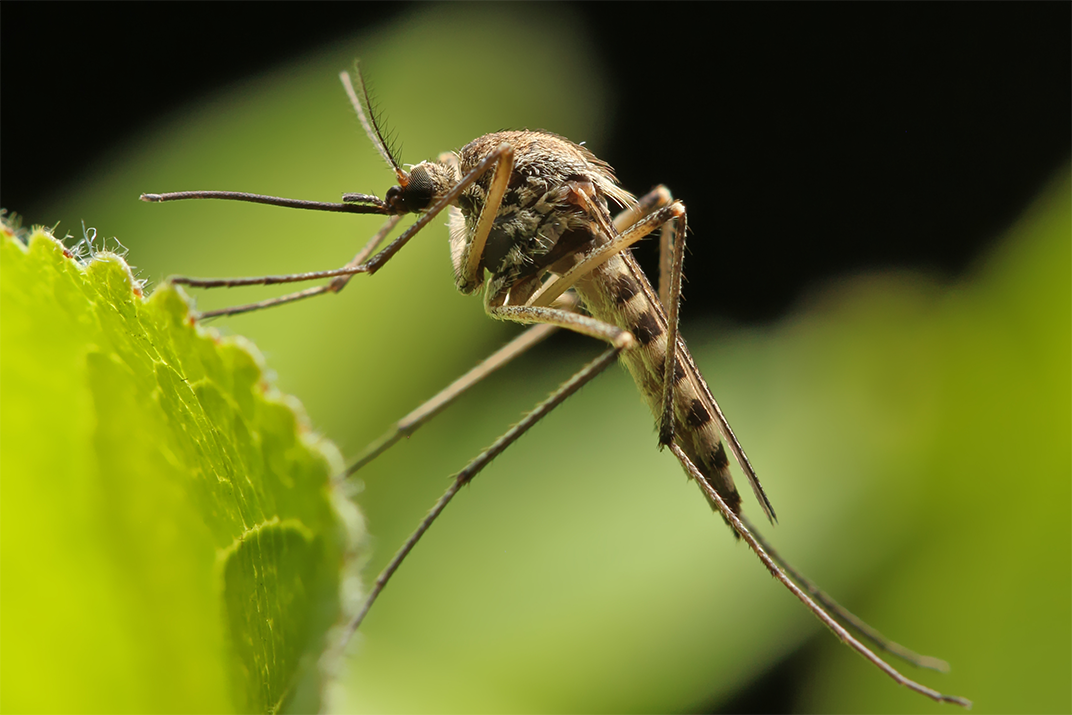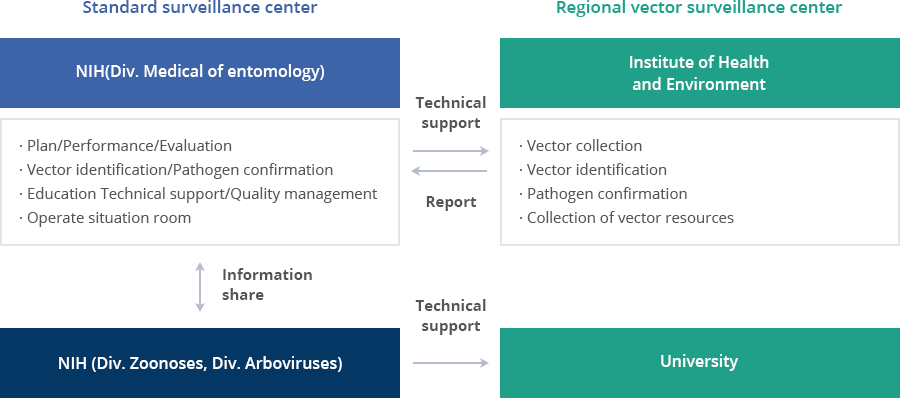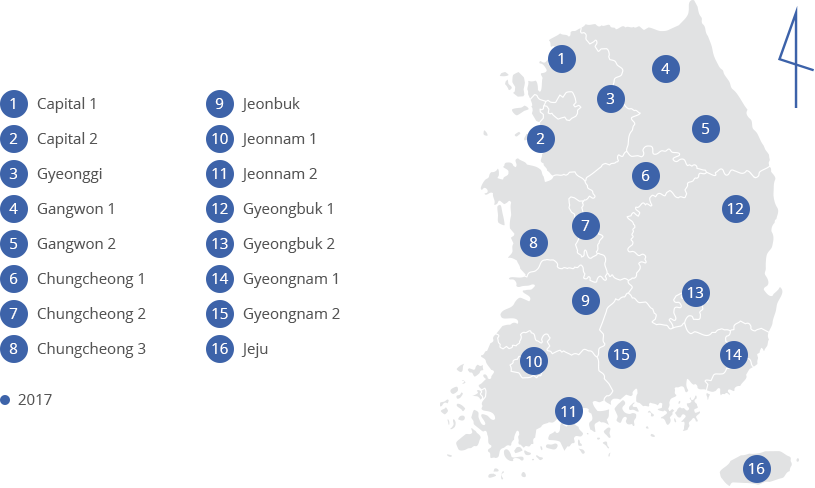contents area
Regional vector surveillance centers against climate change
detail content area

Regional vector surveillance centers against
climate change
Regional vector surveillance centers against climate change
Operation of regional vector surveillance centers against climate change. It is a project to provide surveillance information through monitoring real-time information on infectious disease vectors and vector-borne diseases due to climate change and environmental changes.
Background
- The recent rise in the incidence of vector-borne disease caused by wide distribution and high density of infectious disease vectors due to climate change.
- A high possibility of introduction of infectious disease vectors and vector-borne diseases in Korea due to increasing international trade.
- Continuous surveillance of vectors and pathogens at the surveillance centers is necessary to monitor the occurrence of vector-borne diseases and to provide prompt responses.
Overview
Participating Institutions: 11 Universities and 2 Institutes of Health and Environment Regional vector surveillance centers : 16 centers (Capital 1, Capital 2, Gyeonggi, Gangwon 1, Gangwon 2, Chungcheong 1, Chungcheong 2, Chungcheong 3, Jeonbuk, Jeonnam 1, Jeonnam 2, Gyeongbuk 1, Gyeongbuk 2, Gyeongnam 1, Gyeongnam 2, Jeju) Operating system of vector surveillance center
Operating system of vector surveillance center

Standard surveillance center
NIH(Div. Medical of entomology)
- Plan/Performance/Evaluation
- Vector identification/Pathogen confirmation
- Education Technical support/Quality management
- Operate situation room
Regional vector surveillance center
Institute of Health and Environment
- Vector collection
- Vector identification
- Pathogen confirmation
- Collection of vector resources
NIH (Div. Zoonoses, Div. Arboviruses)
University
NIH(zoonoses) between University Technical support NIH(zoonoses) between NIH(medical) Information share NIH(medical) between institute Technical support and ReportEstablishment of regional vector surveillance center

Korea map 2017
- 1. Capital 1
- 2. Capital 2
- 3. Gyeonggi
- 4. Gangwon 1
- 5. Gangwon 2
- 6. Chungcheong 1
- 7. Chungcheong 2
- 8. Chungcheong 3
- 9. Jeonbuk
- 10. Jeonnam 1
- 11. Jeonnam 2
- 12. Gyeongbuk 1
- 13. Gyeongbuk 2
- 14. Gyeongnam 1
- 15. Gyeongnam 2
- 16. Jeju
- Business contents: Investigate the distribution and density of the vectors, and confirm the pathogen infection of the vectors.

National distribution survey for three years
Tick 2015, Mite 2016, Mosquito 2017
Monthly surveillance of mosquitoes density causing Japanese encephalitis
Monthly surveillance of mosquitoes density causing Japanese encephalitis

Confirmation of pathogens from mosquitoes by real-time PCR
Confirmation of scrub typhus by PCR
Confirmation of scrub typhus by PCR
- Vectors and Pathogens

mosquito
mite
tick
mite
tick
- Main arthropod vectors of medical importance are mosquitoes, mites, and ticks.
- The following pathogens (viruses and bacteria) transmitted by the vectors give rise to public health concerns: Japanese encephalitis virus (JEV), Dengue fever virus (DNV), West Nile virus (WNV), yellow fever virus (YFV), Zika virus, severe fever with thrombocytopenia syndrome virus (SFTS) virus, and Orientia tsutsugamushi.
- Surveillance period
- The national monitoring periods for investigating the density and prevalence of the major vectors are from March to November. However, depending on the vectors' biological activities, sampling period and frequency are different; mosquitoes are collected twice a month all year around, mites once a week from September to November, and ticks are overseen once a month from April and November.
- A national survey of the distribution of the vectors has been also conducting at three-year intervals, in consecutive order of ticks to mites, to mosquitoes (tick->mite->mosquito).
